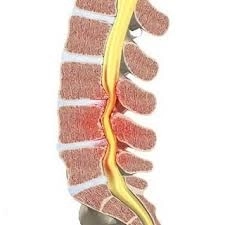
Lumbar Spinal Stenosis: Precise Diagnosis and Safe Surgery with Dr. Ahmed Saeed
Published on: 2025-06-26 | Written by: Dr. Ahmed Saeed, PhD in Neurosurgery and Spine Surgery
Lumbar spinal stenosis is one of the most common spinal problems in older adults. It can lead to chronic pain, leg weakness, and difficulty walking.
Dr. Ahmed Saeed, consultant neurosurgeon, emphasizes that early diagnosis and precise surgical intervention are key to successful treatment and improving the patient's quality of life.
What Is Lumbar Spinal Stenosis?
The lumbar spinal canal houses the nerves of the lower back. When this canal narrows due to degenerative changes, disc herniation, or arthritis, it compresses the nerves, causing pain, numbness, or leg weakness.
Dr. Ahmed Saeed explains that the condition usually progresses gradually, and early symptoms may go unnoticed.
Key Symptoms That Require Evaluation
According to Dr. Ahmed Saeed, symptoms of lumbar spinal stenosis include:
-
Lower back pain radiating to the legs
-
Numbness or tingling in the lower limbs
-
Gradual muscle weakness in the feet or legs
-
Difficulty walking long distances
-
Temporary relief when leaning forward or sitting
When Is Surgery Needed?
Dr. Ahmed Saeed states that surgery becomes necessary when:
-
There’s no improvement with medication or physiotherapy
-
Muscle weakness becomes more noticeable
-
Symptoms interfere with mobility or daily activities
-
MRI or CT scans show significant nerve compression
Minimally Invasive Surgery for Spinal Stenosis
Dr. Ahmed Saeed utilizes advanced microsurgical techniques to minimize tissue damage and speed up recovery, including:
-
Decompression Surgery: Removing structures that press on the nerves
-
Spinal Fusion: When there’s instability between vertebrae
-
Microscopic Surgery: Enhances precision, reduces bleeding and complications
Conclusion
Lumbar spinal stenosis is a manageable condition, whether treated conservatively or surgically depending on severity. With Dr. Ahmed Saeed’s expertise in advanced spinal surgery, patients receive a personalized treatment plan that reduces pain and restores movement safely and effectively.

